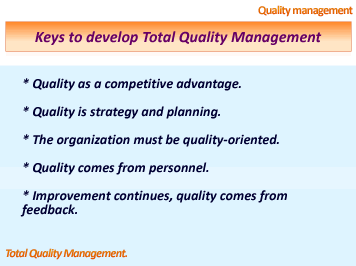Summary and Conclusion
Making reference to the above-mentioned, we can reach to the conclusion that introducing a total quality system implies great efforts for an enterprise. However, these are compensated by measurable economic benefits. Besides the 4% in quality cost reduction, it also implies a cost reduction due to reaching optimal conditions for processes and organizational structure. Employees feel more motivated and work in a more conscientious way, living day to day the concept of quality.
All of this results in loyal clients as well as gaining new ones, and thus, ensuring a sustained survival for the enterprise in a long term.
As we mentioned previously, enterprises can use TQM to acquire a long term competitive advantage. However, it will only be effective if it comes hand-in-hand with constant improvement plans and techniques like benchmarking. An enterprise needs to assimilate TQM into its global strategy by establishing it into its mission. If it doesn't, it would be easily imitated and this competitive advantage would disappear in a very short time.

Adding to Grant's thoughts(1995), we must determine: Who are we?, Who are our clients?, What structure, resources and capabilities do we have available?, Who is our competition?, Where do we want to go?, How are we going to do it?.
Keys to Total Quality Management.
In the previous image, we can see the "mottos" we could take out from this piece of work and, as you can see, they can help answer some of these questions.